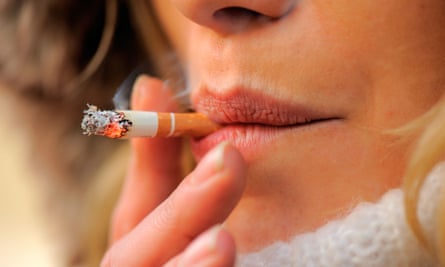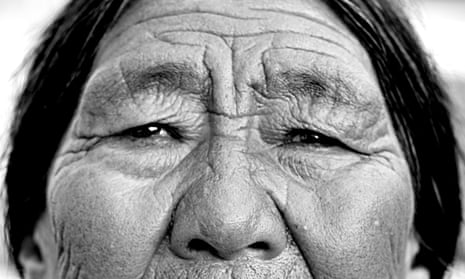The face is like a party balloon. At the height of the fun it is plump and firm, the skin is taut, the surface smooth. It shines with good health. But once the games are done and the cake demolished, there’s a perceptible sense of deflation: the firmness goes, the structure sags, the surface dulls and wrinkles.
As the most exposed area of human skin, the face is prone to wrinkling. It is here that all the factors that drive their formation come together in one place. There’s the raft of intrinsic changes that see the skin become thinner, weaker and less elastic, while the supporting muscle, bone and fat decreases. There’s the extrinsic ageing due to sun damage, smoking, poor diet and pollution that accelerate the tissue’s decline. And then there’s the impact of physical demands: when we raise our eyebrows, smile, frown, and laugh, the expressions produce lines on our faces. When young, these vanish when our face returns to rest, but as the skin ages, those lines become permanent.
The first fine lines can appear on the face when people are in their 20s. Often, these are the horizontal lines that cross the forehead when we raise our eyebrows. More lines tend to arrive when we reach ours 30s, such as crows’ feet around the eyes, not only from smiling and laughing, but from sun damage and squinting in bright sunlight. “If you ask your friends to frown, some people will get a single line in the middle of their forehead, and some will get a double line, because everyone’s anatomy is slightly different,” says Prof Rachel Watson, executive director at the A*Star Skin Research Labs and Skin Research Institute of Singapore.
Our 40s and 50s bring yet more lines, under the eyes and around the mouth, which become more visible as they deepen. In our 60s and older, there can be wrinkles all over the face, the most prominent more than 2mm deep. The creases don’t come only from pulling expressions. If you sleep on your side or stomach, and end up in the same position every night, the pressure on the face can induce further lines. Tip: sleep on your back if you can.
On top of the creases from physical use are wrinkles that reflect the very fine pattern that is visible on the skin from youth. Skin has a natural “microrelief” and as the tissue loses thickness and elasticity with age, the patterning becomes more prominent. “It becomes accentuated with ageing,” says Michael Sherratt, professor of biochemistry at the University of Manchester. “You get an increase in the depth of the lines you can see on young, healthy skin.”
Understanding the anatomy of a wrinkle is not straightforward work. Examine a piece of wrinkled skin under a microscope and there is little to distinguish it from non-wrinkled skin. Removed from the tissues and tensions around it, the wrinkle simply disappears. But there are biological changes behind the patterns. With age, there’s a waning in the supply of fresh cells to the epidermis, making the skin’s top layer grow thinner. In the underlying dermis, changes to collagen, elastin and substances like hyaluronic acid reduce the skin’s strength, elasticity and ability to hold moisture. Meanwhile, the bond between the two layers weakens, making the epidermis even more fragile.

While wrinkles are a hallmark of the ageing process, some scientists suspect they might also drive ageing the whole body over. The theory comes from the finding that aged skin contains more defunct, zombie-like or senescent cells. These old cells are more than biological clutter: they release chemicals that fuel inflammation which is linked to a host of conditions – from high blood pressure and diabetes to hardening of the arteries and cancer. Research is now afoot to see whether wrinkled skin rich in senescent cells is a factor in age-related cognitive decline.
Most wrinkles form on exposed areas of skin: the face, neck, hands and arms, because ultraviolet rays in sunlight accelerate the breakdown of the skin’s proteins and drive premature skin ageing. Smoking also drives the ageing process, reducing collagen in the skin. Studies on twins show stark differences in facial wrinkles when one twin smokes and the other doesn’t. Much of the damage is attributed to the toxic compounds found in tobacco smoke, with skin wrinkles a visible sign of harm inflicted on similar tissues, such as blood vessels, throughout the body. It’s not the only way smoking drives wrinkles. The physical act of sucking on a cigarette creates creases in the skin, and smokers often develop lines around the mouth, including telltale vertical lines over the top lip.
Remember that party balloon? It is not only changes to the skin itself that culminate in wrinkles. Just as air pressure in the balloon keeps it taut, so fat, muscle and bone in the face keep it plump and smooth. With age, we lose all of this underlying tissue: the muscle weakens, fat pads shrink, bone resorbs. Gravity plays a part, too, and with the underlying support diminished. “When we think about facial ageing, it’s not just the skin, there are changes to the subcutaneous fat, the musculature and the bones. The skin on the outside is still there, but the elements that keep it rigid are also ageing.” says Watson. “It’s everything that’s starting to deteriorate.”

Comments (…)
Sign in or create your Guardian account to join the discussion